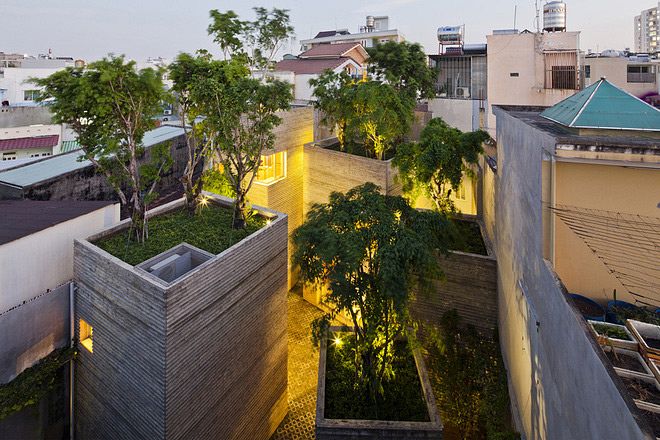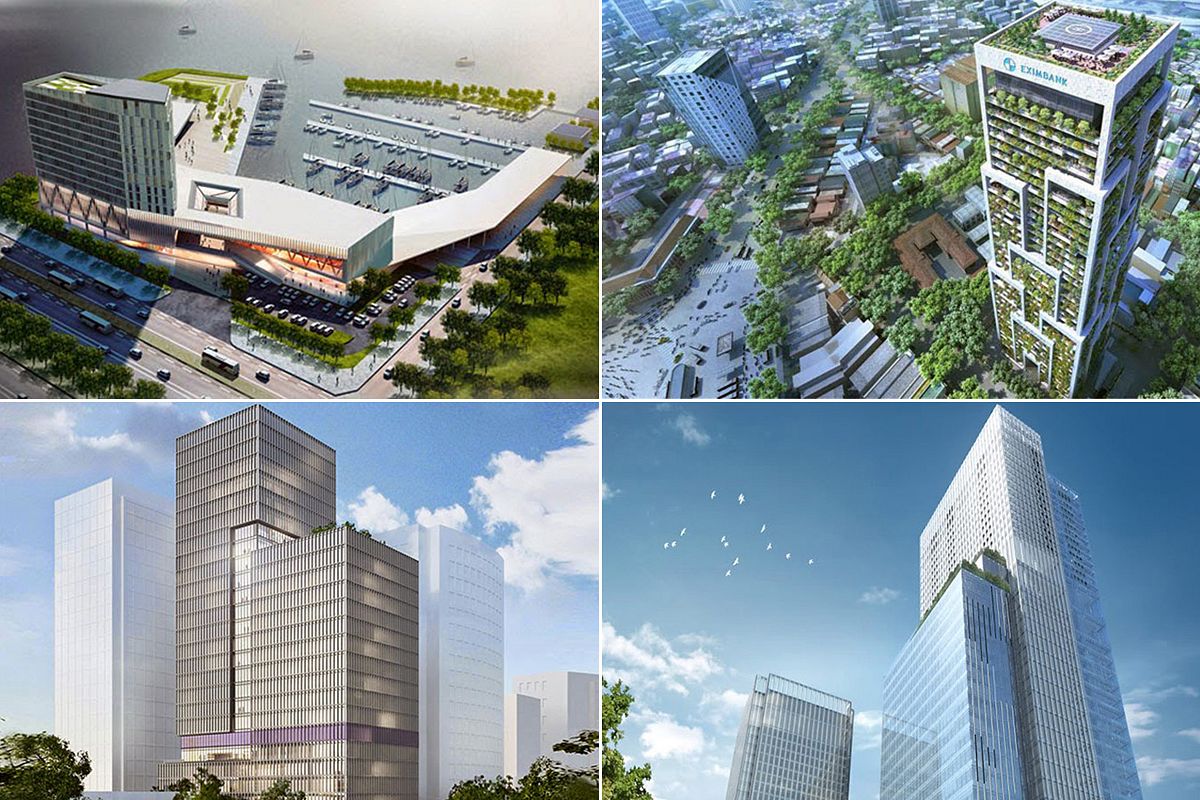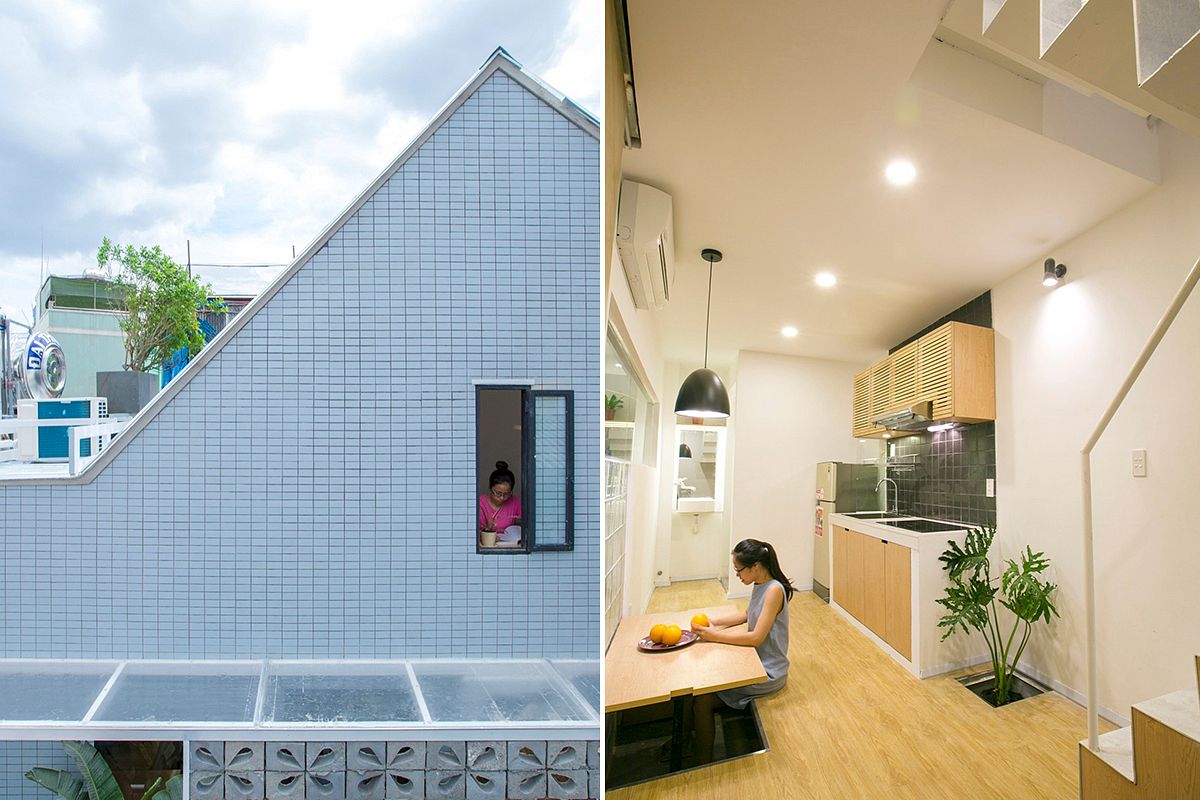On one particularly horrific Monday evening last summer, I wound up in a traffic jam. Bounding over the bridge between District 1 and Phu Nhuan, my jaw dropped as I found a sea of vehicles on the other side.
For a solid half-hour, my lungs took in the exhaust fumes of idling traffic, the din of engines thrummed around me and vehicles, packed storefront to storefront, occupied so much space the road disappeared. At one point, I watched a Saigon Bus drive down the sidewalk, brushing the shop signs as it passed.
If you’re reading this in Saigon, none of the above comes as a surprise. Take a drive during rush hour and everyone is stuck in traffic, perfecting the art of waiting: waiting for the light to turn, for the roads to clear, for four-wheeled vehicles to stop blocking the motorbike lane, and most of all, for a solution to the madness.
For many motorists in the southern hub, the Ho Chi Minh City Metro can’t come soon enough. Once the public transportation network is complete, urban planning experts and city officials believe, Saigon’s increasingly congested traffic will dissipate, roads will clear and pedestrians will embrace walking. But with HCMC Metro’s construction delays, rising car ownership and an urban population that’s growing too fast to manage, the writing’s on the wall: no matter how you feel about the forthcoming metro, it’s going to take a while.
From the very beginning, the HCMC Metro has been a project in flux. According to a 2015 working paper from the Ho Chi Minh City Urban Development Management Support Center (PADDI), city officials commissioned their first feasibility study 18 years ago, exploring the possibility of a mass-rapid transit (MRT) network.
Years later, with construction well under way and the original 2020 end date looming, Saigon’s metro project has grown more and more ambitious. What began as a three-line MRT system has since expanded to an eight-line network, complete with supporting bus rapid transit (BRT), tramway and monorail lines. Tack on the added challenges of cutting-edge technology and large-scale construction in the most densely populated city in the country and it’s no wonder the city’s metro efforts are falling behind.

Map via Huan Hoang.
Though metro has been slow to develop, urban planner Clément Musil, a researcher at the Paris Research Institute of Architecture, Urban and Social Development (IPRAUS) – Paris Belleville Architecture School who has studied the progress of the city’s metro construction, believes its lethargic pace is all part of the process. Though certain challenges – land acquisition, for example – take a unique form in Saigon, the construction of a state-of-the-art public transportation network from the ground up is a tricky task anywhere in the world.
“The technology is new…it’s so difficult to implement but it’s not a question of Vietnam or not Vietnam,” he tells Saigoneer. “It’s difficult in other contexts, too: in Europe, in South America, in China. I would say even what is happening now in Vietnam, [how] it’s so slow to develop, it’s normal. It is a learning process.”
Then, of course, there’s the fact that Vietnam is working on not one but five major public transportation projects at once. As the national government juggles the construction of multiple metro lines in both Saigon and Hanoi, maintaining steady progress on all fronts is no easy feat. The capital currently has two lines under construction, while Saigon has broken ground on two of its own metro lines. Both cities also have a line in the detailed planning stages, meaning there’s more to come.
As a result, MRT lines in both cities have experienced hiccups. In Saigon in particular, cost overruns and construction delays have put a strain on investor funding and pushed back operation dates by at least a couple years. Difficulties with land clearance and management efficiency have also prevented contractors from moving forward on certain stretches of Line 1.

Photo by Brandon Coleman.
While the glass-half-full crowd remains hopeful that HCMC Metro will come into operation over the next few years, Musil tempers this optimism with another caveat: one MRT line does not make a public transportation system.
“The problem is public transportation is not like building just one highway,” says Musil. “It’s a system. And when we are speaking about a system, it means coordination and integration at physical, technological but also institutional levels.”
On top of the challenges hampering MRT development in the city, a fully functioning, operational public transportation system – the kind that might, say, lure drivers off their motorbikes and out of their cars – requires multiple modes of transportation which work together in order to provide comprehensive coverage throughout it.
While HCMC Metro’s construction may garner the most media attention, complementary systems like the BRT and elevated monorail planned for downtown Saigon also face similar challenges, from managing multiple investors and coordinating with several governmental ministries to completing the herculean task of land clearance to make way for these additional modes of transportation.
You would think it couldn’t possibly get more complicated but, of course, it does. For city planners, grappling with Vietnam’s existing urban traffic is like trying to wrestle an opponent that keeps changing shape. Urban population growth in the country consistently hits 3% a year; for comparison, Thailand’s cities grow 2.8% annually, while Malaysia’s urban growth rate comes in at 2.4% and the Philippines’ at 1.3%. Such a rapid increase in population prevents urban planners from nailing down the exact layout of the city as it continues to grow and change.
If the urban landscape around HCMC Metro is changing, the city’s roads are changing right along with it. Everyday, Saigon is flooded with an estimated 8.5 million motorbikes. If you’re following official statistics, that puts more two-wheeled vehicles in Saigon than there are people.
Of course, this volume of traffic has taken its toll on the city’s infrastructure. Though some will argue that Saigon’s traffic jams do not exist, experts estimate such congestion costs the city between US$820 million and US$1.2 billion a year a year.
Thus, in order to serve the increasing number of motorists in the southern hub, city officials continue to build roads and overpasses (like the recently approved 9.5-kilometer flyover between Tan Son Nhat and downtown Saigon) in hopes of providing a short-term solution to traffic congestion. Though these quick fixes only resolve the problem for a finite amount of time, according to Musil, they are necessary.

Photo by Lee Starnes.
“Today, in Vietnamese cities, it’s easier to implement [road infrastructure projects], and it’s quicker because the know-how and the skills are there,” he explains. “The techniques as well as the process and the financing mechanisms are already [in place]. Plus, it’s like in other cities in the world: when they are facing issues, authorities have to give answers quickly, and so they will say ‘OK, I will solve the problem quickly. We will build a new road here or expand a road there and it will be fixed for a while.’”
Unfortunately, these rapid-fire road-building projects don’t actually solve the problem. In 2011, a University of Toronto study found that more roads actually lead to more congestion, meaning projects like the proposed Tan Son Nhat overpass or even the trimming of city sidewalks only provide benefits in the immediate aftermath but not in the long-term.
“The more you are constructing highways and overpasses, bridges, tunnels and all that, the more you will have traffic on [these surfaces],” says Musil, pointing to Hanoi’s recent spate of overpasses as an example.
He explains: “[Hanoi] did some tests with the support of Japanese ODA [overseas development assistance], and now the People’s Committee and its technical departments know how to do it so they replicate all those systems, and they build [overpasses] over several strategic intersections. Now there are many of [these overpasses] in the city so it solved the problem temporarily, but now we are back to before. The traffic is stuck at rush hours.”
p> 
Photo by Lee Starnes.
Still, with plenty of qualified engineers and easy access to funding for such ventures, infrastructure projects like these are tempting as a tangible symbol of development.
Beyond the endless construction of roads and overpasses, the country’s surge in car ownership is also inhibiting the flow of traffic. Saigon’s narrow streets and compact downtown area pose a challenge even for the scores of motorbikes that utilize them on a daily basis; put an SUV or even a generously sized sedan on the road and pretty soon everyone’s idling in traffic. Last year, car imports doubled nationwide, with Toyota raking in over US$1.47 billion in profits. While tariffs on larger vehicles continue to climb, Vietnam’s import taxes on ASEAN-made vehicles are set to disappear in 2018, clearing the way for more car owners before the metro system is in operation.
For the moment, the metro continues to navigate its three greatest challenges: funding, land clearance and effective management. The former has been collected piecemeal from a variety of investors and in a variety of ways, often through private-public partnerships.
As a result, individual management boards have been created in an effort to handle each project’s investments, however Musil believes that once the city’s public transportation networks become operational and begin to work in conjunction with one another, an umbrella organization should be tasked with managing not only the metro but all other modes of public transportation as well.
In the end, the success of the city’s public transportation system – not only in running efficiently but also in attracting urban motorists – will depend largely upon changing the attitudes of Saigoneers who are currently ditching buses – Saigon's lone form of public transportation – en masse.
Some have argued that it’s a race against time to get people on the metro before cars become too available. As Asian Development Bank transport specialist Robert Valkovic told the New York Times in 2013: “Once people get into a car, it’s hard to get them out.”
However with import taxes disappearing from ASEAN-made cars in the coming years, it’s doubtful the metro will be a fully functional system by then. Instead, Musil envisions drivers being lured to the city’s public transportation system by traffic congestion.

Photo by Lee Starnes.
“If the people were stuck in their car to do 10 kilometers and spend two hours to do 10 kilometers [when] by other systems they can do the 10 kilometers but in half an hour then they will switch,” he explains.
This comes down to what Musil calls “the last mile”: that space between a given metro (or BRT, bus, monorail or tramway) station and a person’s final destination. If Saigon’s public transport is efficient enough, he argues, and its sidewalks cleared, potential passengers will be more inclined to alter their current habits as well as the use of sidewalk space.
So, too, does urban planner Floriane Ortega, who was involved in the planning of two Hanoi metro lines.
“The metro will dramatically change the notion of public space in this country,” Ortega recently told the Guardian.
According to the news outlet, Ortega believes a functional metro system could convince urban Vietnamese to change their use of sidewalks to include pedestrian foot traffic. But, as Musil reiterates, how Vietnamese cities will adapt to their new public transportation systems is anyone’s guess.
“Because there is the new system, people will probably leave the car and the motorbike to switch to the metro,” says Musil. “Maybe. We don’t know yet; it’s only a calculation.”
Whatever happens, the combined forces of lagging metro construction, rapidly increasing car ownership and a strained infrastructure mean there is plenty to complain about in the short-term but also plenty to look forward to further down the road.

Photo by Brandon Coleman.














